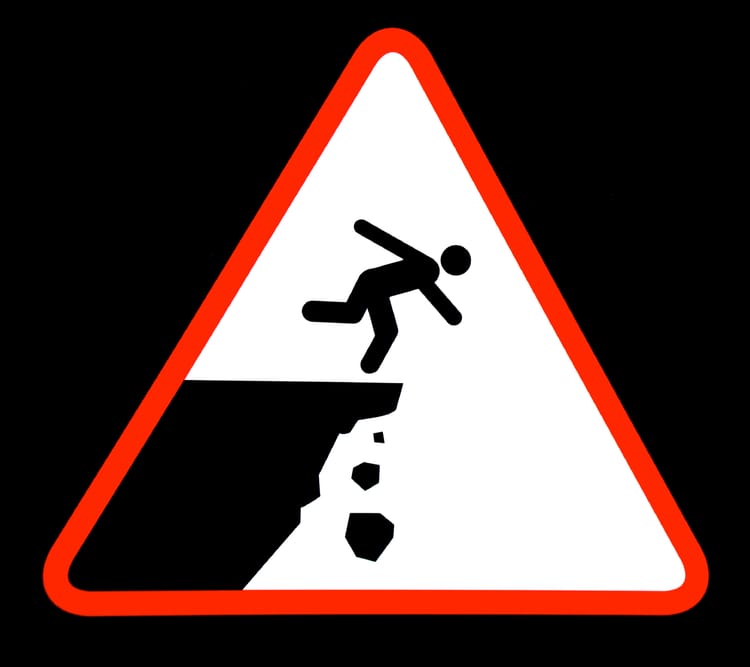Facilitating a 'cultural island' discussion

Introduction
In my last article, I described how societal cultures can shape our unique mental models or ‘scorecards’ for how we evaluate the effectiveness or ineffectiveness of leaders. The key message in that piece was societal culture shapes us in major, though silent and hard to detect ways, and as a result of it’s influence people across the world define ‘leadership’ differently.
This awesome power of culture raises a practical question: how should leaders guide multicultural teams, whose members carry with them different interpretations of not only what makes a good leader, but also what constitutes polite and socially appropriate behaviour?
In that same article on culture and leadership, I mentioned a tool that leaders might be able to use to address this thorny question. It's a method for building a deeper understanding of differences within a multicultural team, created by former MIT professor Edgar Schein. This technique involves creating what Schein called a ‘cultural island,’ and in this article I'll explain how it works.
What is a cultural island?
A cultural island is a temporary, safe space in which individuals suspend their ingrained biases in order to explore different values and assumptions related to culture, and to learn from one another.
Schein assumes that for any cross-cultural collaborations to work, team members must first inhabit a cultural island, and learn experientially from one another about their differences.
What is a cultural island discussion?
A cultural island discussion involves a facilitator guiding an exchange among multicultural team members, for the purpose of building deeper understanding of the assumptions each person carries.
In short, the technique involves seating the team in a circle, and asking the group two sets of questions, one about how team members interact with authority, and a second about how they build trust with others. Schein believes that these two themes – authority and intimacy (the latter is a synonym for relationships) – are core areas that differentiate many cultures, and so they efficiently surface major variations in perspective.
In terms of the mechanics, the facilitator first conveys the rules for the dialogue, which involve ‘talking to the campfire’ (i.e., the centre of the circle, so as to limit eye contact), and not interrupting. Then the facilitator asks the first question of the group (about 'authority'), allows them to explore their answers, and then debriefs their summary reflections. Then the facilitator asks the second question (about 'intimacy/trust/relationships'), followed by yet another debrief.
What is the rational for the cultural island technique?
There are several important ideas underlying this approach. The first is Schein’s belief that the most significant parts of culture exist as deeply held, unconscious assumptions about how to act and interact with others. To review his thinking, he says that culture exists on three tiers:
- Surface level, observable components (i.e., what a newcomer might see and feel in a new company or culture);
- Espoused beliefs and values (i.e., what people say they, as group members, value and aspire to);
- Deep assumptions about people and the world, which are unconscious to most within the culture.
So a core idea here is that our own culture is something we take for granted and lack awareness about, even though we swim around in it.
So if we're not even aware of our own culture, how do you get people to talk about it?
Schein’s answer is that people need to experience culture on a more personal level in order to reflect on, and learn about it. He says if you ask people to share their personal experiences of living and working within a culture, in the presence of others, that recipe will surface those deeper level assumptions.
And then, by having those experiences and assumptions ‘bump into’ those tabled by others, people realize in a moment of experiential insight, what their assumptions are, and how they differ from those of other societal cultures. This ‘bumping’ process, or set of minor collisions between assumptions, makes the assumptions accessible, and available for reflection. (Schein would also argue, conversely, that you can’t teach people – intellectually – about cultural differences. He might say this 'telling' format won’t evoke the same degree of learning, because it's not experiential.)
Ok, so one underlying idea is that culture is buried deep. Another key idea is that you need an experiential process, one that involves the minor clashing of different cultural beliefs, in order to make those assumptions available for reflection, discussion, and learning.
A third major idea underpinning this approach is that you need to create a culturally neutral environment, in which people feel comfortable sharing their views and differences. One way Schein does this is to ask participants to ‘talk to the campfire’ or to the middle of the circle in which they’re seated, whenever they want to speak (a practice borrowed from indigenous cultures). Doing this minimizes eye contact, which helps to suspend reactions and disagreements, and ultimately contributes to a more reflective discussion.
This practice of ‘talking to the campfire’ may also create a culturally neutral space because it promotes face saving. In some cultures, such as those which are high on the dimension Power Distance, making eye contact with others, especially those of higher status, may be seen as impolite or even deeply offensive. So minimizing eye contact may encourage people from various cultures (including those where face saving is a priority) to share more openly in the group.
How does it work?
In this section, I'll explain step-by-step how to facilitate a cultural island exercise with a multicultural team, based on Schein's methodology.
Before starting, seat all participants in a circle, or as close to a circle shape as possible. And then what you do is...
Share the dialogue rules:
The rules are...
- Speak to the ‘campfire,’ in the centre of the circle, not to each other.
- People don’t have to respond to questions.
- Don’t interrupt at any time.
Introduce the ‘authority’ question:
- Ask each member to introduce themselves, AND to address the following question…
- Ask each person to think about a moment in the past when their boss or someone in a position of authority was about to do something wrong.
- Then ask each person, in order and without being interrupted, to tell the ‘campfire’ what they did in that situation, and give as much detail as possible.
- Emphasize that you’re looking for personal stories, not general comments about their native culture. Nudge participants to share concrete examples.
- If someone can’t think of an incident, ask them to share what they would do in that situation.
Reflect on the ‘authority’ question:
- After everyone has told their story, ask a general question like “what differences and commonalities did anyone notice?”
- Ask members to continue talking to the campfire, even if they’re addressing a particular member (some will struggle with this).
- Encourage open conversation (i.e., people don’t have to speak in order, or withhold questions).
- Move on to the next section once the conversation starts to run dry.
Introduce the ‘intimacy’ (relationships) question:
- Ask each person to talk about a situation in which they had to decide whether to trust one of their coworkers, and how they made that decision.
- What kinds of behaviour would they look for in the other person to determine whether or not they could be trusted? What criteria did they use in deciding whether to trust the person and how did it work out?
- Like before, ask each person to tell his or her story of what happened, in order, and without interruption.
Reflect on the ‘intimacy’ (relationships) question:
- Again ask the participants to speak to any commonalities or differences that they noticed in the stories.
- Encourage open conversation, where people can speak in any order, without withholding questions or comments.
Consolidation:
- Ask each person to share one or two insights about his or her own culture and any other cultures that he or she has heard about during the dialogue.
- Ask the group to identify common ground and what, if any, problems they see in working together, given what they have heard about the themes of authority and intimacy.
- Ask the group what next steps they feel they need to work on together.
Other kinds of cultural islands
Though Schein focuses most often on the importance of creating a cultural island through facilitated discussion involving group members, he also suggests that 'procedures' and 'checklists' can function as cultural islands in the sense that they foster a culturally neutral process in which teams can interact.
For example, when using an agreed-upon checklist, a subordinate may have license to ask challenging questions to a more senior person, without threatening the senior person's 'face.' In this case, the checklist itself becomes the island which participants inhabit, and it has it's own local set of rules, which diverge from the cultures participants may hail from.
Schein suggests these checklist-based cultural islands can be critical for avoiding costly mistakes in organizations, which may arise through poor communication. For example checklists can give nurses license to challenge doctors in an effort to reduce medical errors.
Erin Meyer also discusses in her book 'The Culture Map' how multicultural teams can benefit from creating frameworks like a team charter, or an agreed-on process for how they will make decisions. These sound like versions of the process-based cultural islands Schein refers to.
Creating cultural islands for different functions
One final idea about cultural islands – I wonder if leaders can create them for members of different functions inside the same organization (e.g., sales, finance, operations etc), not just for team members of different societal cultures.
Schein is clear in his work that unique cultures can form not only in societies and organizations, but also within organizations as subcultures, based on functions, divisions, geographical locations, or professions.
I don't think Schein's discussion-based technique should be 'cut and pasted' for use with different functional areas inside an organization. But I do wonder if by simply taking the time to engage in participative discussion and consensus building, leaders can create the same shared cultural understanding achieved by Schein's technique.
I’ll illustrate this idea with a story from a former client, who I recently caught up with. He is now leading a country level business, and has generated excellent results, though his group could still improve it’s operational effectiveness in significant ways. On our last catch up call, he told me the story of how he recently encountered a situation in which the 'right' decision seemed very obvious to him, and he could have made it in ten minutes. However, he wanted to use an inclusive decision making process, and so he spent five hours on calls with several functional areas, seeking to surface each of their concerns, and to find a solution that all would be aligned with. In the end he reached a decision that was roughly similar to the one he thought he could make after ten minutes, and he wondered what the point of the exercise was.
I suggested that perhaps his ‘shuttle diplomacy’ approach where he ran back and forth between groups, sharing each one's perspective with the other, may have helped wrench everybody up onto the sandy shores of a cultural island, where team members could begin to appreciate the different assumptions, priorities, and decision making processes that other functional areas brought to the discussion. I said, perhaps without knowing it, he had fostered a temporary safe space for his various functional subcultures to learn about their differences. I also suggested that perhaps he couldn't detect any benefit from his efforts in the short term, but in the medium and long term, I wonder if he will notice some benefits from finding the common ground atop a cultural island - deeper shared understanding of the broader business, higher quality relationships, and more alignment among functions.
Further reading
'Organizational culture and leadership' by Edgar Schein - see this link for a PDF of the 4th edition of his book, and check out Chapter 21 starting on p. 385 for more details on creating cultural islands.
Music
Luke Combs is best known for his remake of Tracy Chapman's classic song 'Fast Car,' by my favourite song of his is an acoustic version of a track from his 2022 album 'Growin' up.'
Tim Jackson, Ph.D. provides advisory and deep expertise on executive leadership development, to dynamic and high performance organizations.
Tim's services include in-depth executive assessment using interviews and gold-standard qualitative data analysis techniques; executive advisory and coaching rooted in his deep expertise of the drivers of leadership effectiveness; workshops built with evidence-based data and models that transfer high-quality knowledge, and enhance the impact of participants; and facilitated sessions that create dialogue and conversation among senior leaders, in a safe environment that promotes shared learning.
Throughout his 18-year career, Tim has worked with a wide variety of clients, including CEOs, executives, managers, and individual contributors; leaders located in Canada, the US, Europe, and China; individuals spanning 11 different industry sectors and every key functional area; and those driving major change inside private-equity owned businesses.
The following are examples of how Tim has delivered value to his clients: he assessed and coached 28 leaders in a large Canadian CPG company over a 5 year period, including preparing high potentials for promotion and helping derailing leaders course correct; he coached senior leadership team members and middle managers in a global chemical company to navigate dynamic change resulting from the largest acquisition in their history; and he provided assessment, coaching and advisory support to the CEO of a Canadian ‘supercluster,’ a federally-funded accelerator of strategic economic activity (this cluster received renewed funding in early 2023).
Tim has published his ideas about leadership in various outlets, including The Globe and Mail, Forbes.com, several HR trade magazines, and peer-reviewed journals. He also writes original articles about leadership topics in his newsletter at www.timjacksonphd.com. He has also shared details of his practice at leading conferences like the Society for Industrial and Organizational Psychology.
Tim has a Ph.D. in Industrial/Organizational Psychology from Western University, where he explored the drivers of leadership effectiveness in both his Master’s and Dissertation-level research. He and his family are based in Toronto, ON.
Please feel free to contact Tim with your feedback about this site, questions about his services, or to share your own ideas about leadership in organizations.
Email: tjackson@jacksonleadership.com
Phone: 647-969-8907
Website: www.jacksonleadership.com
Newsletter: www.timjacksonphd.com






Member discussion